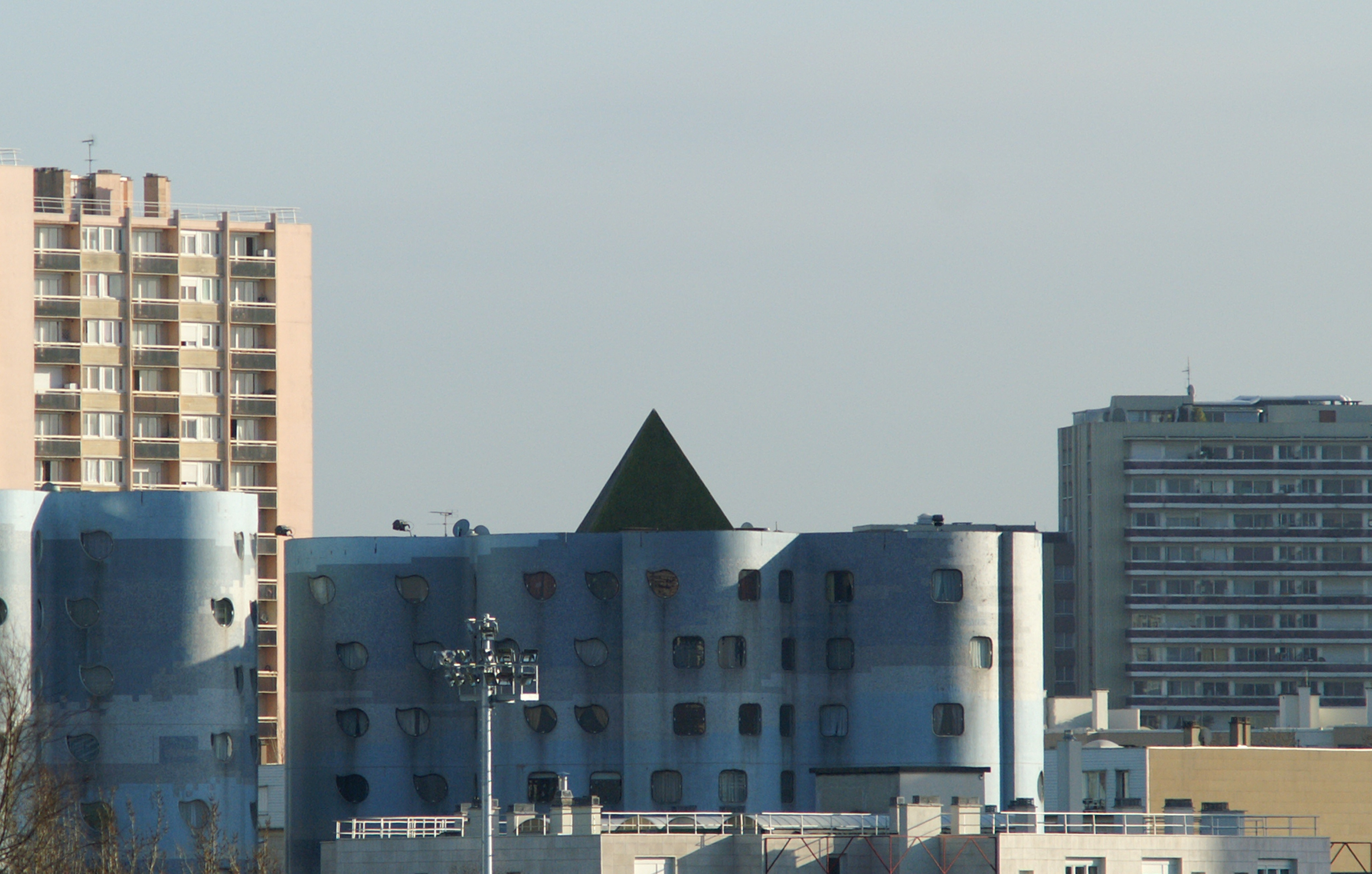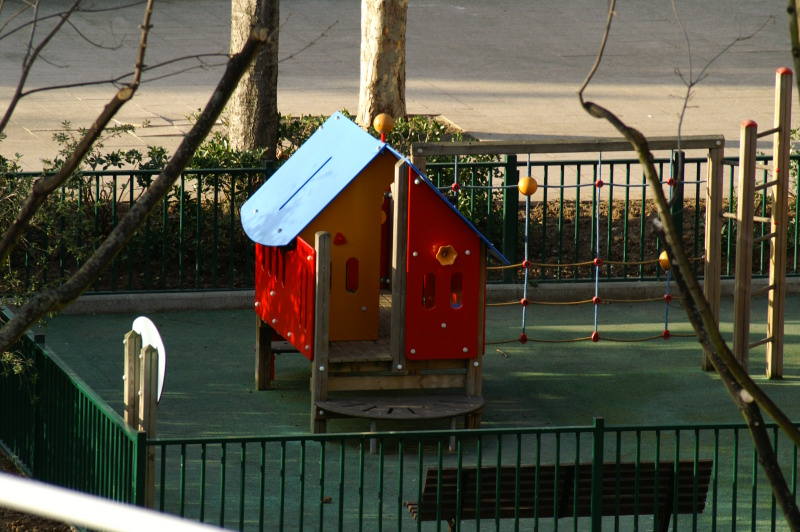Tuesday, February 20, 2007, 05:48 PM - Photography
Raw converters was an area with an obvious lack of open source offer.Of course, basic solutions like using the UFRaw plugin for the Gimp or even directly using DCRaw from the command line were possible. But it only provides a minimal solution (not even mentionning that the Gimp does not yet support 16 bits per channel), and not really what I have in mind for a usable raw converter.
To me, a raw converter should provide at least the following:
*handling of raw files (of course)
*luma/colors global manipulations
*crop/resize/rotate
*sharpen
*denoising
*ability to copy settings between files
*batch processing
And a really good one would also provide correction tools (lens correction).
Rawstudio seems to be the first piece of open source software going in this direction. With a few version iterations, it could become something really nice, filling a need.
Now, please explain me why is there no Windows version available?
| 0 trackbacks
| permalink
| related link
Saturday, January 27, 2007, 08:09 PM - Lenses
As a zoom lens for my Dynax 5D, I originally bought a relatively cheap 70-300 Tamron zoom. With all the positive things said on the Dyxum forum about the old lens known as the "Beercan", I decided to buy one. In order to know how do both really compare, I decided to do a few tests.So here it is, a comparison of those two lenses:
*Minolta AF 70-210 F4
*Tamron AF 70-300 F4-5.6 LD
The Minolta beeing an old design from about 1985, it is only available as second hand, while you can build the Tamron as new. Regarding price, both share a similar price.
First, let's compare both, without a camera.
*Body:
The Tamron body is plastic, while the Minolta one is a metal body. Hopefully, both have a metal rear mount. This is purely subjective, but the Tamron really feels cheap when compared to the Beercan. It seems that both are not in the same league. Small detail: serial is sticked on the Tamron, while engraved on the the Minolta.
*Weight:
435g for the Tamron, 695g for the Beercan. That's a important difference for lenses that are supposed to be used without mono/tripod.
*Zoom range:
As indicated by their respective names, the Tamron is 70-300, while the Minolta is only 70-210. Obviously 1 point for the Tamron.
*Aperture:
The Minolta is a constant F/4 aperture, while the Tamron is a more usual 4-5.6 aperture. At maximum zoom, the Minolta is 1 stop faster, but you should note that when set at 210mm, the Tamron can be opened up to F/5, so it's only about 1/2 F-stop slower than the Minolta. The Minolta being a constant maximum aperture lens, it is easier to use in fully manual mode.
*Minimum aperture:
The minimum aperture on the Tamron is F/22, while the Minolta can be closed down to F/32, 1 F-stop slower. In some situations, it means that you could perhaps avoid using a neutral density filter on the Minolta if you need a slow shutter speed.
*Macro:
Both are claimed to be able to do some macro shots, but don't count on them if you really want to often do macrophotography. They only achieve their maximum magnification (1:4 on the Minolta, 1:2 on the Tamron) at full zoom extension, so it's not easy at all when compared to a 100mm macro.
*Filter diameter:
55mm for the Minolta, 62mm for the Tamron. Both filter sizes will be in a similar price range.
*Zoom ring:
When zooming, the Tamron extends while the Minolta does not. Both zoom rings share a similar size, but the Minolta is a lot more smooth. No zoom creep on those lenses, and front element does not rotate when zooming.
*Focus ring:
Front element rotates on both lenses when focusing. Zoom ring is a lot more smooth on the Beercan, but the focus ring is very small. It is so small that you might perhaps want to use the lens hood to rotate the focus ring. As the Beercan was released when Minolta was pushing its first autofocus SLRs, it seems to be a purely marketing decision.
*Rear element:
While the rear element is sealed and easily reachable for cleaning on the Minolta, there is something to be said about the Tamron.
On the Tamron, the rear element is a bit deep inside the lens body, so it is not that easy to reach when you want to clean it. Worst, it goes even deeper inside the lens when zooming, opening access to a kind of internal cavity located around the optical elements. If dust goes inside, it will be nearly impossible to clean. It won't directly affect the optical performance, but can then go into you camera body when zooming in or out.
Now, it's time to test both zooms on a camera. I tried them on my 5D, which is using a 6MP sensor. In all shots, exif info should still be present.
*Focus speed:
None of those lenses is a speed king, but focusing is faster on the Minolta. It's also less noisy than the Tamron when focusing.
*Resolution test:
Minolta, 75mm, F/4:
Tamron, 75mm, F/4:
Minolta, 75mm, F/8:
Tamron, 75mm, F/8:
At 75mm, wide open, there is not much difference between both lenses. Closed down to F/8, the Minolta Beercan is a lot sharper than the Tamron.
Minolta, 210mm, F/4:
Tamron, 210mm, F/5:
Minolta, 210mm, F/8:
Tamron, 210mm, F/8:
At 210mm, the first thing that can be noticed is that the real focal lengths are different. I don't know if the Tamron is more than the reported 210mm or if the Beercan is less than 210mm, but practically the Tamron's focal length is higher than the one from Minolta.
Regarding optical resolution, beeing wide open or closed down to F/8, the Minolta is a lot sharper than the Tamron. To me the Beercan wide open (F/4) is even sharper than the Tamron closed down to F/8.
Tamron, 300mm, F/5.6:
Minolta, 210mm interpolated to 300mm, F/8:

Tamron, 300mm, F/8:
300mm can only be done using the Tamron. At this focal length, it is really soft wide open. Closed down to F/8, it's better, but still soft.
As a comparison, I cropped a 210mm shot from the Beercan, and resized it using Paint Shop Pro. When comparing the "emulated" 300mm from the Minolta to the real 300mm from the Tamron, it seems to me that the Minolta is still providing more details than the Tamron. However, we can also notice that the noise pattern from the camera sensor is bigger (the F/8 shots are using 400 iso).
Quite an amazing result from the Beercan here, that makes you think twice about the 90mm extra focal length that is provided by the Tamron.
*Color test:
Minolta:

Tamron:

Probably not the best color test, but to me there is not much difference regarding color there.
*Chromatic aberration (color fringing) test:
Minolta, 210mm, F/4:
Minolta, 210mm, F/8:
Tamron, 300mm, F/5.6:
Tamron, 300mm, F/8:
Wide open, there is some noticeable fringing with both lenses, with a bit more on the Beercan. Closed down to F/8, chromatic aberrations are reduced and both lenses seem to produce about the same amount of fringing.
*Bokeh test:
Probably not the best case, but here are my test shots:
Minolta, 210mm, F/4:

Minolta, 210mm, F/5:

Minolta, 210mm, F/8:

Tamron, 210mm, F/5:

Tamron, 210mm, F/8:

Differences are subtle, so I will let you draw your own conclusion there.
To me the conclusion regarding the bokeh test is that it was a bad place to change lenses, and that I now have to clean my sensor.
As a final conclusion, I would say that I personally prefer the Beercan to the Tamron. The only real advantages for the Tamron are weight and the fact that it can be bought new.
Now, if we could have a new lens based on the Minolta Beercan, but with a reduced size/weight by cropping it to APS sensors, and with an improved coating, that would be a very good modern lens.
Friday, January 12, 2007, 11:14 AM - Photography
From time to time, I am wondering "why is this feature not available in my camera?".To me, there are some features that might be quite handy in some situations, and strangely they are not always available. The surprising thing is that many of them are pure software features, which means that they would increase development/validation/user documentation/support costs a little, but would not increase production cost at all. As some manufacturers implemented some of them, in most cases it's clearly not an implementation issue, but probably just a choice from the manufacturer.
Here is a list of some of those features:
*Focus confirmation and sensor stabilization on manual lenses:
If the body already provides sensor stabilization, it can also be used with manual lenses. As with focus confirmation, the only piece of information required is the focal length. So why not letting users enter it manually?
*Focus length information for AF zoom lenses:
Obviously this is known by the camera, as it's part of exif information. Why not displaying it into the viewfinder when user is changing focal length?
*Depth of field information:
Could be computed easily inside camera.
*Trap focus:
You manually set the focus, and when camera detects something in focus at the specified focus location/distance, it fires. This would ease macrophotography a lot.
*Ability to set the auto-ISO interval:
My camera is only automatically adjusting ISO sensitivity between 100 and 400. While it's nice in full light, when the light is dimmer it becomes quite annoying to have to manually switch between ISO settings. I'd like to be able to change it to 200-800 for some indoor or even to 800-3200 for handheld night photography.
*Ability to have a preview shot with histogram:
Take a shot that will not be written to flash card, in order to have an idea about the light rendering and the histogram values. For newcomers, it would be very nice, especially for night scenes.
*In camera on-demand raw to jpeg conversion:
Ability to convert raw to jpeg in camera, allowing to choose potential exposure compensation.
*Timer based interval shooting:
Nice for thunder shooting.
Thursday, December 28, 2006, 11:45 AM - Photography
Found a very interesting interview of Pentax engineers about the K10D.They are mainly talking about data acquisition/reading from the 10Mp sensor and mechanical consideration.
Back Next

 Calendar
Calendar




